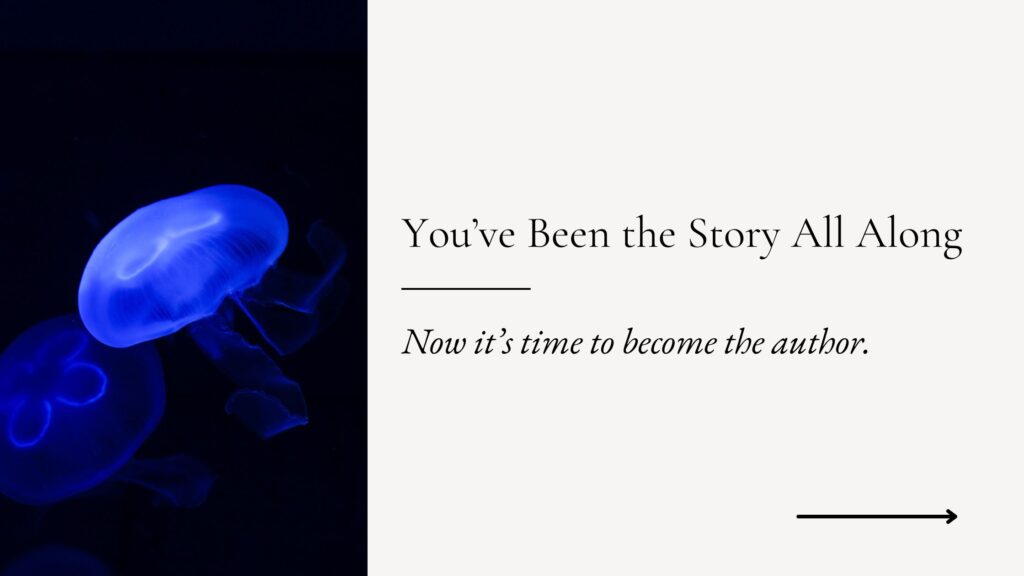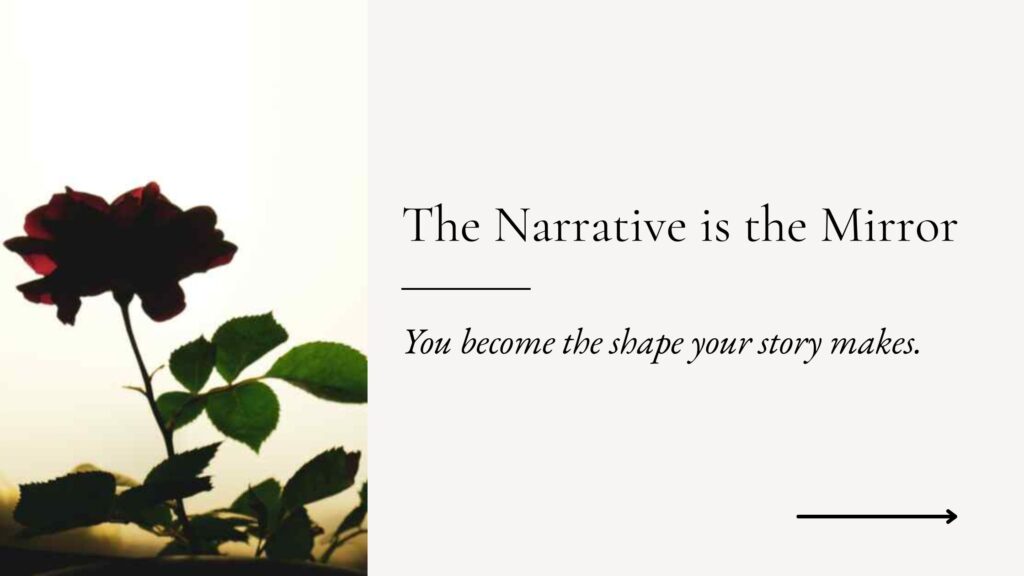The Feeling You Can’t Quite Name
The subtle loss of identity that can accompany burnout is a quiet unraveling that few people name—but many feel.
You don’t feel tired.
You feel gone.
Not just low energy—but low meaning.
As if the thread you were following snapped somewhere back there,
and now the days don’t link up anymore.
They just… happen.
You look at your to-do list and feel nothing.
You try to rest, and feel restless.
You stare at your work, your projects, your life—and it’s like looking through fog.
People tell you to take a break.
But a break from what, exactly?
Because this isn’t about being overworked.
It’s about feeling like you can’t find your place in the story anymore.
Burnout isn’t always about doing too much.
Sometimes it’s what happens when the narrative collapses—
and the self you were living through goes silent.
⸻
What Is Narrative Collapse
(and How Is It Different from Burnout)?
Narrative collapse is what happens when you lose the thread—not just of your schedule, but of yourself—a kind of identity loss that often hides beneath the surface of burnout.
It’s not the same as being tired.
It’s not even the same as being overwhelmed.
It’s when the why fades.
When the roles you were playing no longer feel real, and the plotlines you’ve been living through feel like they belong to someone else.
You might still be moving through the motions—answering emails, brushing your teeth, saying “I’m fine.”
But somewhere inside, the story engine has gone quiet.
There’s no arc.
No momentum.
No sense that you’re becoming anything—just a looping of what used to be meaningful, now hollowed out by exhaustion or disconnection.
For neurodivergent minds—especially those sensitive to symbolism, emotional resonance, or internal structure—this narrative collapse can hit harder.
Because it’s not just burnout of the body.
It’s symbolic disintegration.
When your inner story breaks, your systems start breaking too.
Why do some small rituals feel like lifelines?
This isn’t just intuition—it’s biology. Explore the science behind ritual and memory and discover how symbolic action helps rethread identity during burnout and transition.
⸻
Why Rest Isn’t Enough
When you’re burned out, people say, “Just rest.”
Take a nap. Take a walk. Take a break.
But what if rest isn’t restorative?
What if the moment you stop moving, the silence is unbearable?
Not because you’re afraid of stillness—
but because the stillness reveals that something’s missing.
This is the hidden edge of narrative collapse:
you can rest the body, but if the story doesn’t feel safe to return to,
you stay in limbo.
It’s like waking from a deep sleep and not remembering who you were before you closed your eyes.
Recovery isn’t just about recharging.
It’s about reweaving the story frayed by identity loss and burnout—about giving your inner narrator a reason to return.
For many of us—especially those who think in metaphors, archetypes, emotional symmetries—rest only works if it’s ritualized.
If it reminds us of our place in the story, not just our need to pause.
You don’t just need more sleep.
You need a way back into the narrative.

⸻
How to Recover Your Narrative Thread
You don’t fix narrative collapse by forcing momentum.
You heal burnout and identity loss by listening for the thread—quietly, gently—until it begins to hum again.
Here are ways to begin that reweaving:
1. Create Ritual Checkpoints
Choose one small daily act that says, “I am still here.”
It could be lighting a candle, whispering your name, placing your hands on your chest and saying, “I return.”
It doesn’t matter what it looks like. It matters that it remembers you.
Ritual isn’t routine.
It’s a symbolic signal to your nervous system:
“You’re not lost. You’re still in the story.”
2. Recover Old Symbols
Pull out a book you used to love. A playlist. A scrap of an old idea.
Touch the remnants of past stories—not to go back, but to remember the you who once felt alive inside them.
3. Write One True Fragment
Don’t try to journal.
Write one line: “I am in the part of the story where…”
Even if you don’t know what comes next, you’ve just stepped back into narrative awareness.
4. Let Someone Witness You
If the thread feels too tangled to hold alone, ask for a mirror—not advice.
Sometimes it takes another voice to say, “I see the shape of your story, even here.”
This is where symbolic tools can help.
Some people use tarot. Others use poems.
Some… commission a ritual artifact to hold a moment they can’t name yet.
Because even if the words aren’t ready, the meaning is.
You don’t need a plan.
You need a thread.
And threads begin with presence, not pressure.
⸻
Your Story Isn’t Over. It’s Unfolding Differently.
You are not behind.
You are not broken.
You are not failing because your fire dimmed, or because you can’t feel the urgency others seem to carry with ease.
You are between chapters.
And this part—the one that feels like fog, like silence, like nothing—is still part of the story.
The absence you feel is not an absence of worth.
It’s the pause before reinvention.
The hush before the thread is picked back up.
Maybe the old arc ended and no one told you.
Maybe the role you were playing ran out of truth.
Maybe the fire burned too long without tending, and now you’re sitting in the ashes wondering what’s left to build with.
You don’t need to rush the rebuild.
But you can begin to listen—gently, symbolically, without urgency—for what wants to emerge.
Because there is still a story.
And it doesn’t need to be loud to be real.
It just needs to fit your breath again.
⸻
Begin Again—Gently
If this speaks to you, you’re not alone.
You’re in the quiet, sacred pause between chapters—and even here, the story is still yours.
If you’re ready to begin weaving again, you don’t have to do it alone.
I offer narrative coaching for neurodivergent adults and meaning-makers—designed not to push through burnout and identity loss, but to help you return to the narrative in your own rhythm.
This isn’t performance coaching.
It’s narrative restoration.
A slow, symbolic re-entry into a life that fits.
→ Explore Narrative Coaching →
Or, if you’re craving something smaller:
• Read about Living Lore Artifacts →
• Visit the Archive →
• Or just stay a little longer here, on the Path of Mythic Living →
Your thread will find you again.
For now, you’ve taken the first step:
You’ve named the silence.
And that, too, is a beginning.
⸻


